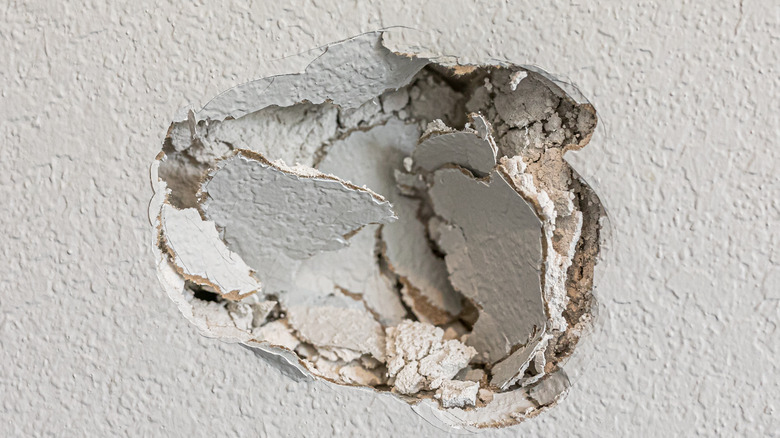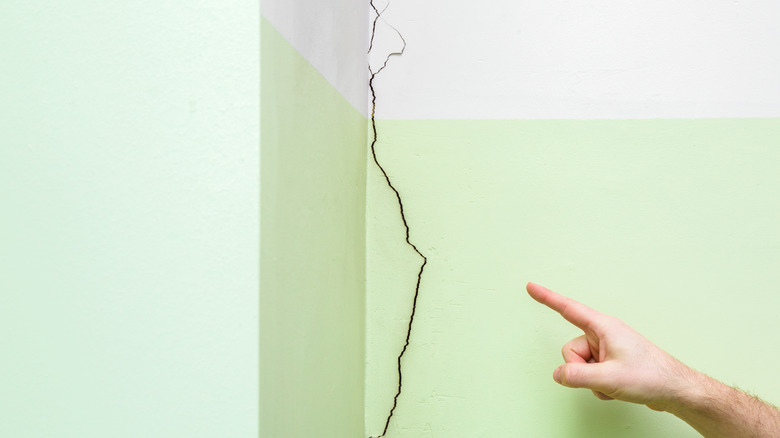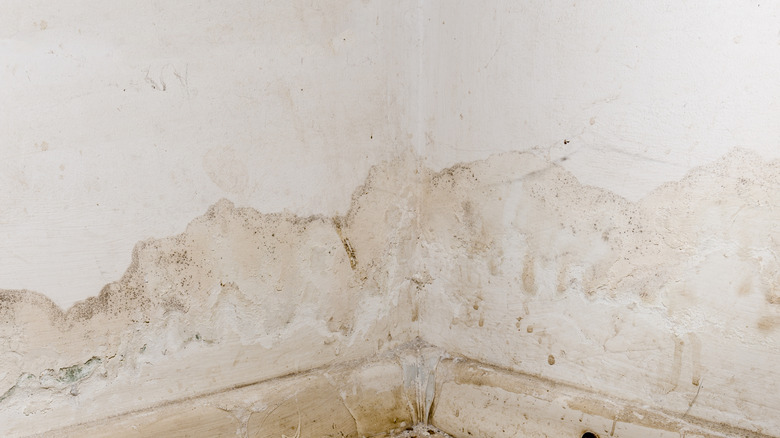How To Know If Your Drywall Needs To Be Replaced Rather Than Repaired
Many homes have drywall throughout, and most often, patching small holes in drywall is all it takes to restore its look and functional stability. Drywall tends to be easy to repair, especially when you have minor dings, tiny holes from nails, or scratches from a chair brushing across it. In these cases, the use of joint compound, a type of filler material, some sanding, and paint can help repair small imperfections without too much difficulty.
On the other hand, larger holes and more severely damaged areas need more attention. For example, if the doorknob goes through the drywall, creating a deep hole, you may be able to cut out the damaged section and place a new portion in that spot. Though a more aggressive repair, it's still not necessary to remove the entire sheet of drywall to get a cohesive, functional wall again. However, there are certain situations when you absolutely need to replace the whole sheet.
Noticeable cracks in the drywall
Drywall is susceptible to damage if there is movement in your home. For example, shifting foundations due to water damage or a home that's settling naturally due to erosion. One of the most common outcomes of this shifting is the development of one or more cracks. The cracking itself can travel up, into extensive portions of the drywall. This typically warrants the replacement of the entire slab instead of just removing the obviously damaged portion to replace it.
however, it is critical to consider the underlying cause of the damage before completing these repairs. Issues with the foundation of the home, for instance, will continue to worsen, causing ongoing problems. If you notice fissures like this in the drywall, check surrounding sheets as well and consider turning to a professional to inspect the foundation of the home. In addition, any loose or crumbling drywall material under the paper exterior could signal the need to remove the entire sheet.
Water damage
Drywall is highly absorbent, which is why water can leech up into the wall much higher than the flood line. As it does, the drywall becomes mushy and cannot maintain its structure, even after it has dried out. Often, that moisture can create the ideal environment for mold to grow — a process can start quickly after water damage.
In this situation, removing all of the impacted drywall is necessary, and that often means removing surrounding areas where the mold could have spread to as well. After repairing the underlying cause of the moisture, you may want to consult a professional about the need for mold remediation. Hidden water damage behind the walls can often go undetected for some time, allowing mold to flourish without your knowledge, which ultimately impacts the overall health of your home and its structural stability. Allow a professional to determine the best level of treatment for any water damage to your drywall to minimize extensive renovation risks.


